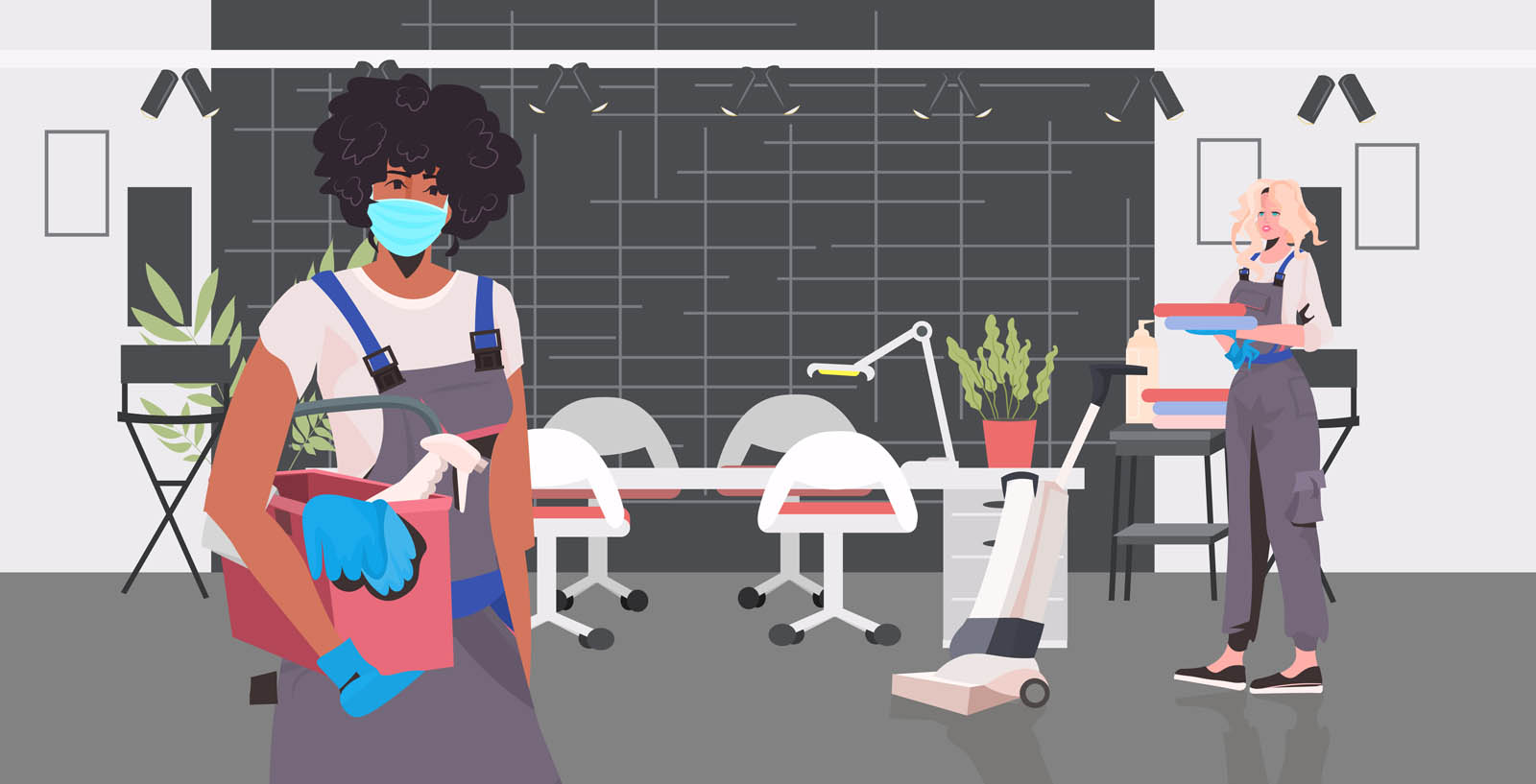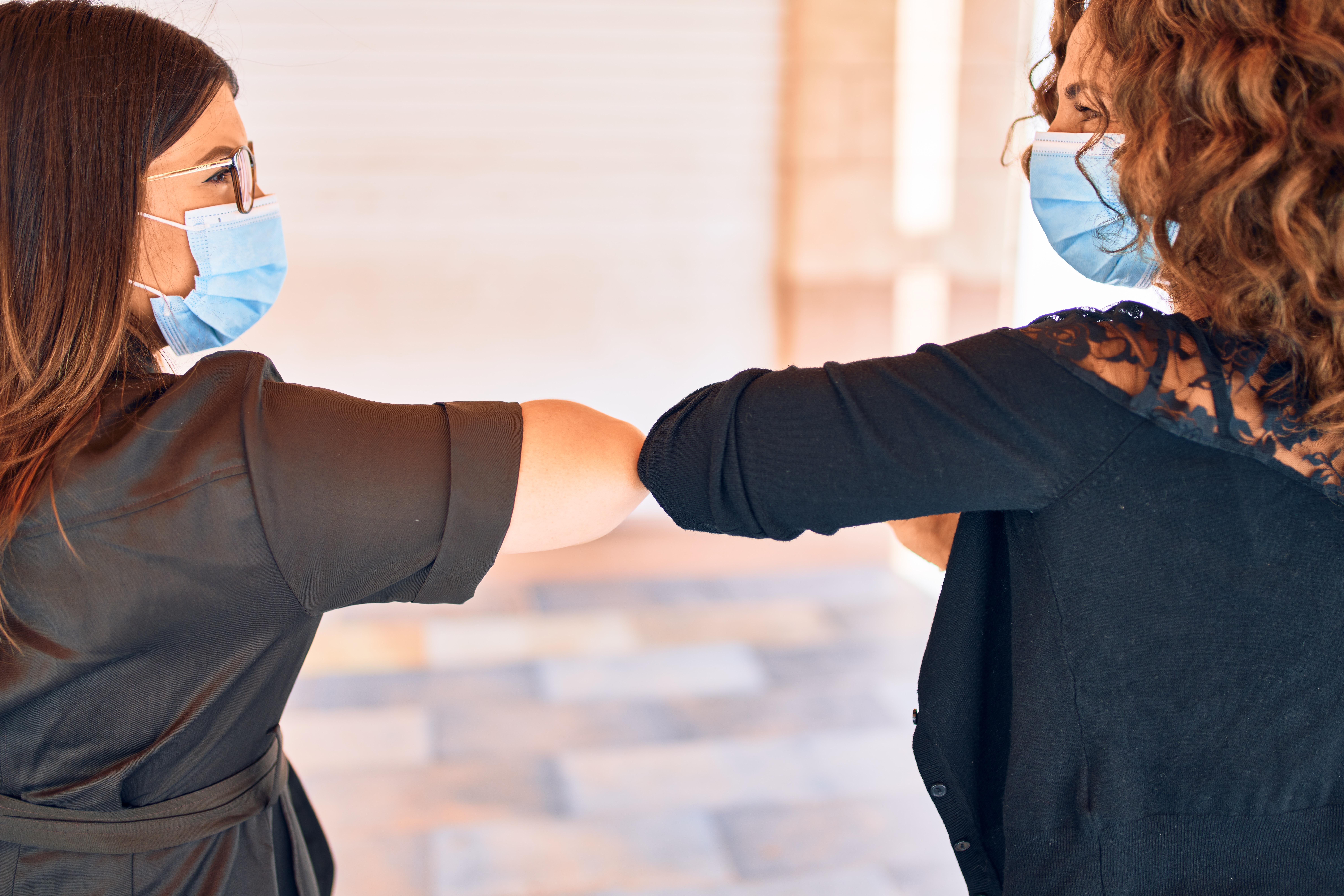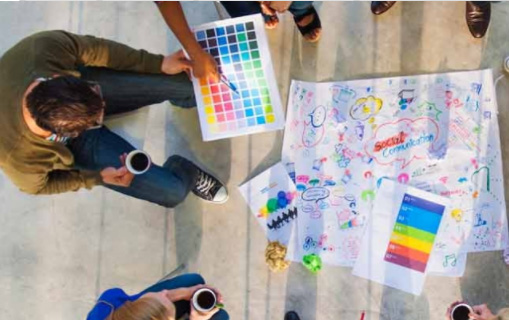
Qualitative Research: The Return to In-Person Fieldwork
Filed Under: COVID, Qualitative Research
Kat Figatner
Senior Vice President, In-Person Qualitative Research
On March 11 and 12, 2020, I had typical days as a qualitative moderator. One day, I assisted a colleague who was conducting research with consumers to test a new haircare device; the next, I was moderating groups for a clothing brand where respondents tried on various outerwear styles. COVID-19 was high on everyone’s minds (professional sports were just suspended; Tom Hanks announced he had it), but it was mostly business as usual. We had more hand sanitizer on hand and were mindful of wiping down shared chairs, iPads, pens, and other equipment. I dismissed a respondent because she coughed (even though she said something was just stuck in her throat). Show rates were good considering that just a couple of people couldn’t participate because their kids’ schools suddenly closed. But as I was in groups that Thursday, stay-at-home orders were being announced. I reluctantly took an Uber home (using a sanitizing wipe to grip the door), went to the grocery store, filled my cart to the brim, and waited in lines that reached down the aisle. Everything was about to change.
All our upcoming in-person qual research was suspended or altered. In-person shop-alongs switched to remote and then to just standard webcam interviews as we didn’t want to send consumers out into the public at the store. In-person workshops were delayed and then executed with a make-shift approach (we’ve since honed our virtual workshop technique). Other projects were canceled as clients had to deal with suddenly reduced or frozen budgets.
As we got new RFPs in the COVID-era, we recommended online qual solutions- whether asynchronous like digital ethnographies and discussion boards, “live” qual involving real-time conversations, whether as a one-on-one webcam interview or group, or a hybrid approach to marry the benefits of both types of qual.


Since C+R has been conducting online qual research for 10+ years, this transition was seamless. There was chatter about whether this was the final nail in the coffin of focus groups and in-person research. Online techniques work well, and with the explosion of video conferencing during COVID, both for work and home, webcam approaches have become more comfortable and natural to respondents. But I argued (and still do!) that no – focus groups are not dead – this was just a temporary suspension. There are some types of research that require in-person interactions and can’t be replicated online, such as when you need consumers to see, touch, feel, taste, or experience stimuli. Or when the confidentiality and/or limited quantity of a prototype prevents sending it to consumers for an in-home trial. And those online qual approaches – while extremely rich, insightful, and efficient – lack the full immersive experience of an in-home ethnography, the energy, and dynamics of an in-person groups or the ability to read a consumer’s full body language. I was and am confident that in-person qual will live on.
So, before the restrictions were lifted in Chicago in June, we made plans for how we could safely execute in-person research. We did this by:
- Developing a pre-field survey to administer just prior to research, to ensure no one participating (in the front or back room) has symptoms or is waiting for the results of a COVID test.
- Preparing PPE kits with masks, wipes, sanitizer, and tape to mark social distancing areas.
- Developing fieldwork protocols and making plans for how to alter group sizes to keep people separated in the research.
- Partnering with Fieldwork to conduct a survey to gauge consumers’ sentiments about participating in in-person research:
- Were they open to doing in-person research?
- What accommodations do they expect and want?
- The answer: overwhelmingly yes, they were open to participating, and their requests were reasonable (having sanitizer available and maintaining social distancing).
And then we waited.
While we offered up in-person solutions alongside online ones in responses to RFPs, our clients have been a bit more hesitant to get back into the field. With many corporate offices still closed, in-person research was off the table.
But the tide seems to be finally turning. Six months after our last time in the field, we conducted our first in-person research project. Fittingly, it was a follow-up to a consumer hair care test we conducted just before the shutdown. This time, we tested the product with stylists.
Because we were in a salon instead of a facility, we had to be fully responsible for the precautions taken (whereas facilities have been enacting their new safety procedures for months now).
- We hired professional cleaners to clean and sanitize the salon before and after the trial as well as to be onsite throughout the fieldwork, cleaning up after consumers as they moved through various stations in the salon.
- Everyone completed their pre-field symptom survey just prior to the research and passed a temperature check upon arrival.
- There was a designated 6-feet perimeter from the test station for the observers.
- To limit the number of people in the salon, there was a skeleton crew on site and the interviews were streamed to a remote audience.
- Hand sanitizer and alcohol wipes were used profusely throughout the day. And, everyone was fully masked throughout the fieldwork period (except for those moments when we slipped away to take a quick sip of water or coffee or eat a quick lunch).
There were some challenges unique to these COVID times. With everyone wearing masks, it was important to read cues from the full body and eyes since the rest of the face was obscured. The masks hindered sound, so sometimes probing took more time. A special microphone was used to amplify the audio to the remote viewers. Throughout, we remained vigilant in keeping our distance from one another, which was especially challenging as we maneuvered the technology (camera and webcam for streaming) around the stylists as they worked different sides of the models’ heads. It also meant a normal whisper to a colleague to share a private thought about the process had to be converted into a text message. And we had to be prepared to roll with the punches – the moderator for this project lives in Indiana. With that state’s cases on the rise, there was a chance Chicago’s quarantine mandate would have prevented her from entering the city to do the research. We had a back-up plan in place, but luckily their numbers stayed below the threshold.
Overall, it felt safe and reaffirmed the necessity for in-person research. There was no way we could have done this type of research via any other method with one precious prototype that is highly confidential. This prototype needed to be tested with multiple stylists and on different types of hair. The stylists’ experiences needed to be observed up close (as close as we could get!) to see how they handled and interacted with the product. With this in-person fieldwork, we can confidently answer the client’s burning questions.
It was exciting to get back into the field, albeit a little daunting at first, given the extra protocols required. But now that we’ve embarked on in-person research in the middle of COVID, I feel confident in doing more. With the right precautions in place, I feel we can safely and effectively conduct these projects that require in-person research.
As I’ve been writing this blog, we just sold our next in-person project. Bring them on!
explore featured
Case studies

